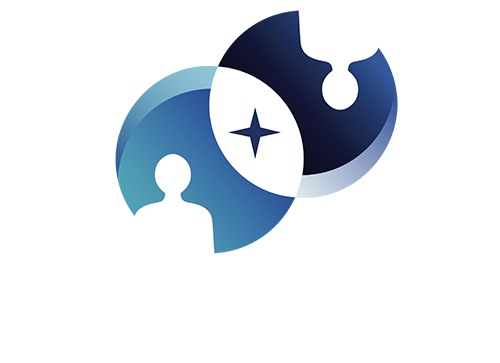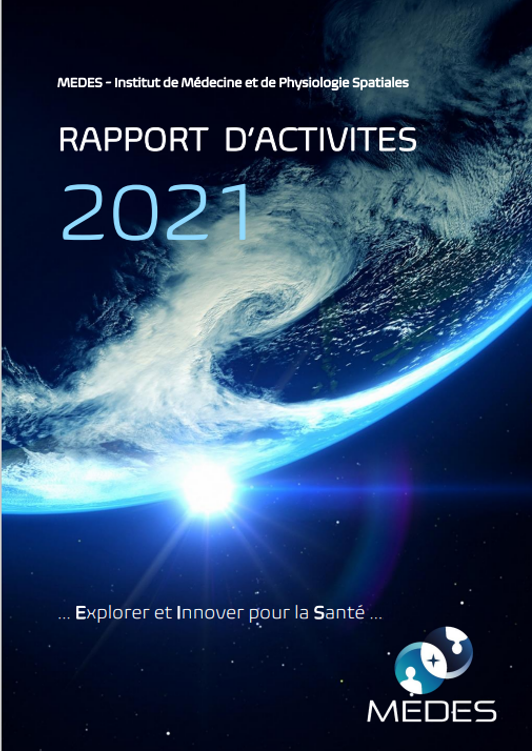Get informed
Our 2021 annual activity report is online !
“The space sector is currently very dynamic with, on the one hand, new challenges and actors to prepare future space exploration missions and, on the other hand, an ecosystem in full mutation, with the arrival of New Space actors offering new opportunities, in particular for the health sector.
In this context, MEDES is a key player in issues related to space medicine and continues to promote cross-fertilisation between space and health.
…
This report bears witness to the exceptional activities carried out by MEDES throughout the year 2021. A particularly intense year, rich in projects, which has kept its promises despite a still restrictive and sometimes uncertain health context.
…
Intense and structuring challenges for MEDES, successfully met thanks to the exemplary mobilisation of an expert and passionate team! “
Audrey Berthier, Director of MEDES
Find out more ?
Learn about space medicine, weightlessness simulation models, artificial gravity and more…
Did you say space medicine ?
Since Yuri Gagarin’s maiden flight in 1961, almost 600 people have gone into space. With the pursuit of current activities and space colonisation ambitions, this number will continue to increase. The men and women who leave Earth in (very) good health must remain so during and after their mission. While the absence of gravity is one of the main health factors, it is not the only one. Confinement and isolation can cause psychological disorders; exposure to high levels of radiation can have biological effects that are still insufficiently known; living conditions (temperature, humidity, contaminants, etc.) on board vehicles also pose risks. These are all factors that space medical research is addressing. And the further you look out into space, the more complications and risks appear. The launch phase, life in a space environment, adaptation to another celestial body … are all situations that need to be approached differently from a medical point of view. Space medicine is therefore a separate branch of medicine. It consists in protecting the health of space crews in a hostile and isolated environment. It consequently addresses the physiological, pathological and psychological effects of this new environment on human beings. The objective is to study and understand the undesirable physiological effects of the space environment, to study and provide the crew with the means to protect their health (suitable equipment, training, in-flight monitoring, etc.), to ensure a healthy environment for them, and to address any problems that may arise during space flight or on return to Earth.
Protecting the health of astronauts… amongst other aims
Space medicine also makes an immense contribution, on Earth, a field where we might not expect to find it. Space medicine and all the corresponding research needed to make progress, to ensure the health and performance of astronauts in space, are bringing about a transfer to terrestrial medicine, in the form of technical or therapeutic advances. Space is a unique field of investigation. It can be seen as a model of a hyper-sedentary situation or, for some physiological systems, as a model of accelerated but reversible ageing. A significant proportion of chronic diseases and deaths are related to lifestyle, and in particular to physical inactivity. Understanding the genetic and environmental determinants of healthy ageing is thus a major public health objective. All research in space medicine is dual research: it uses space models or even the space environment to accelerate medical research on similar terrestrial disorders (e.g. osteoporosis, sarcopenia[1], etc.). For example, studies have been carried out on the loss of sensory and motor skills that can lead to balance problems, which on Earth result in a risk of falling in the elderly.
[1] Osteoporosis: decrease in bone density. Sarcopenia: decrease in muscular capacity.
Bedrest as a model for simulating weightlessness
The anti-orthostatic bed rest model has long been used to simulate weightlessness on the ground
Who hasn’t dreamed of staying in bed for days on end? Some volunteers decided to stay for several weeks… but for the sake of science!
Prolonged bed rest was developed in the USSR in 1976. This is the most commonly used weightlessness simulation model; it consists in laying a volunteer in an anti-orthostatic position, i.e. head down (by tilting the bed, with the feet raised), to get as close as possible to what astronauts experience. The norm today is bed rest at an angle of -6°. In practice, between 20 and 24 volunteers usually take part in each of these studies (in 2 campaigns).
Without leaving their beds, the volunteers are monitored by numerous scientific teams through different protocols selected by the space agencies. They carry out batteries of tests according to the fields studied, which vary according to the studies. They might concern physical capacities, heart function and blood circulation, muscle and bone structures and functions, energy and nutritional needs, the immune system, hormonal regulation, reflexes and balance, or well-being and psychological impacts.
In each study, in addition to bed rest, pre- and post-nursing periods are included to measure and compare the baseline physiological parameters of each volunteer. Finally, the food is strictly controlled to assess the impact of diet on the results of the study.
Why bed rest at -6°?
After several decades of practice and several studies carried out with angles of inclination varying from 0 to -15°, in particular with the assistance of astronauts who reported what they had felt, it was determined that an inclination of -6° optimally simulates the effects of space microgravity on the human body. This position induces a migration of body fluids to the upper part of the body, as observed in space. This position is now the standard for microgravity simulation bed rest studies. Other inclinations are used to simulate the effects of exposure at partial gravity levels.
Dry immersion as a model for simulating weightlessness
Dry immersion: immersed, but dry!
Dry immersion is another, more recent model, which again comes from the Russians and was deployed for the first time in France in 2015, at the MEDES space clinic, on the occasion of a study conducted under CNES supervision.
At first glance, dry immersion looks more or less like a spa dunking. The idea seems quite pleasant: a few days of resting on a kind of floating mattress! The reality is somewhat different, and for anyone who has tested it for more than a few hours, it is real exercise. You have to get used to the position, which is unnatural, but very close to what you would experience in space. So we ‘float’, and our bodies experience this in a way that is quite similar to that of an astronaut. In concrete terms, this involves a tank full of water with a waterproof cover on which the volunteer lies. This tarpaulin then covers the person and the water seeps in through the gaps in the fabric. Volunteers then find themselves in a state of suspension. They are immersed but not in contact with the water, hence the term ‘dry immersion’. The advantage of this method is to simulate the lack of a load-bearing surface. Since the load is equally distributed, around the body, the brain interprets this as a complete lack of support, a situation comparable to that of real microgravity. Another characteristic of this immersion is the almost total physical inactivity, due to reduced movement, the lack of body load and the pressure of the water. The dry immersion model thus makes it possible to quickly reproduce the effects of weightlessness on sensory-motor and cardiovascular systems. The model is effective and a good complement to bed rest. In water, the effects occur faster than with the bed rest model over the same period, but there is also less data due to the shorter durations. The volunteers stay in the tanks for between 3 and 5 days, in water that is at an ideal temperature for the body. They eat, sleep and perform most medical tests there. They still get out for a daily shower and to go to the toilet, but in a lying position so as not to lose the effects of the simulated weightlessness.

